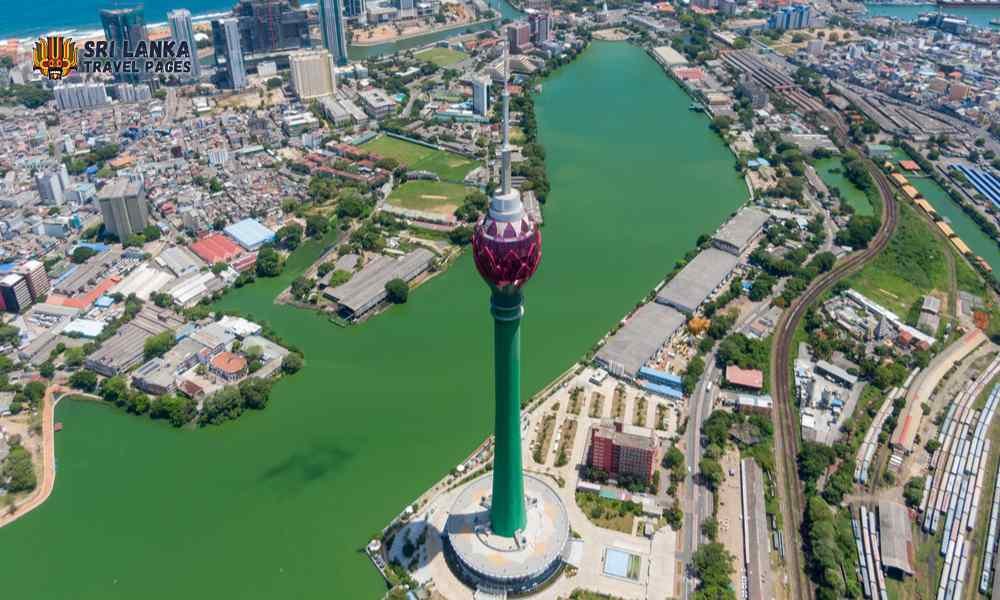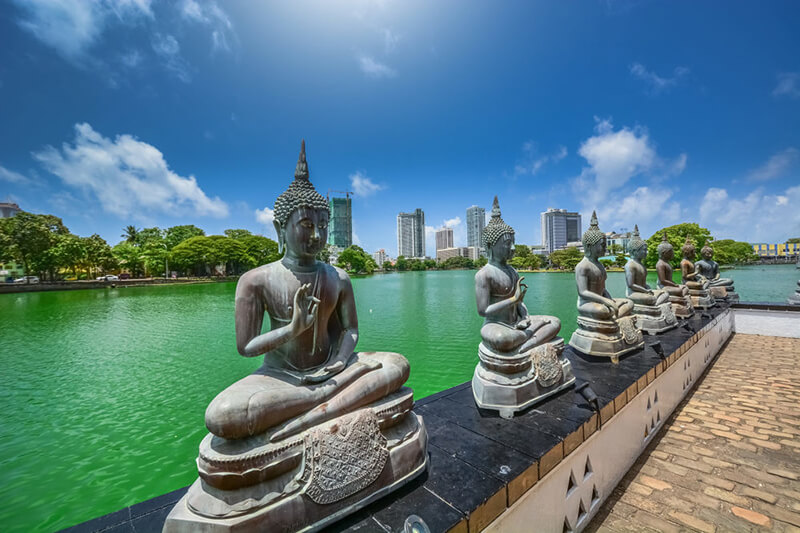
Colombo, the bustling capital of Sri Lanka, is a city of captivating contrasts. A vibrant tapestry woven with threads of colonial history, modern ambition, and ancient traditions, Colombo offers a sensory feast for the traveler. From crumbling colonial-era buildings standing shoulder-to-shoulder with gleaming skyscrapers to fragrant spice markets buzzing with activity, this dynamic city promises an unforgettable experience. Forget the stereotype of a mere transit hub; Colombo deserves to be explored, savored, and understood. This guide will delve into the heart of Colombo, unveiling its history, highlighting its main attractions, offering essential travel tips, and providing everything you need to plan your perfect Colombo adventure.
A History Etched in Stone and Spices:
Colombo’s history is a rich and complex narrative, shaped by centuries of foreign influence. Its name, believed to be derived from the Sinhalese word "Kola-amba-thota" (meaning "mango harbor"), hints at its early origins as a trading post. However, its strategic location along the lucrative spice route made it a coveted prize for colonial powers.
Related Articles about Colombo Unveiled: A Journey Through Sri Lanka’s Vibrant Capital:
- Finland: A Symphony of Nature, Culture, and Arctic Wonders
- The Lion City’s Crown Jewels: A Guide to Singapore’s Most Exquisite Hotels and Beyond
- Unveiling the Magic of Morocco: A Journey Through History, Culture, and Breathtaking Landscapes
- Parisian Panache: A Grand Tour of the City’s Top Hotels and All You Need to Know for an Unforgettable Stay
- Thailand: A Tapestry of Enchantment – Unveiling the Kingdom’s Best Tourist Attractions
-
Portuguese Era (1505-1658): The Portuguese were the first Europeans to arrive, establishing a fort in Colombo and initiating trade in cinnamon and other spices. They introduced Catholicism and left behind architectural remnants still visible today.
-
Dutch Era (1658-1796): The Dutch ousted the Portuguese, further fortifying the city and developing its infrastructure. They focused on cinnamon cultivation and trade, establishing a more organized administrative system. Their influence is evident in the architecture of the Fort area and the canal system they built.
-
British Era (1796-1948): The British seized control of Colombo in 1796, transforming it into the capital of British Ceylon. They further developed the city, building railways, roads, and modern institutions. This period saw significant economic growth, driven by tea, rubber, and coconut plantations. Independence in 1948 marked a new chapter for Colombo, as it transitioned into the capital of an independent Sri Lanka.
Today, Colombo stands as a testament to its layered past, a city where colonial buildings coexist with modern structures, and where different cultures and religions blend seamlessly.
Main Attractions: A Tapestry of Experiences:
Colombo offers a diverse range of attractions, catering to every interest. Here are some must-visit destinations:
-
Galle Face Green: This expansive promenade stretching along the coastline is the heart of Colombo’s social life. Locals and tourists alike gather here to enjoy the sea breeze, fly kites, sample street food, and witness breathtaking sunsets.
-
Gangaramaya Temple: A fascinating blend of architectural styles, this Buddhist temple is a true visual spectacle. Its intricate carvings, vibrant colors, and eclectic collection of artifacts make it a truly unique and captivating place to visit.
-
National Museum of Colombo: Immerse yourself in Sri Lanka’s rich history and cultural heritage at the National Museum. Its vast collection includes ancient artifacts, royal regalia, and exhibits showcasing the country’s diverse artistic traditions.
-
Independence Square: This iconic landmark commemorates Sri Lanka’s independence from British rule. The Independence Memorial Hall, built in the style of Kandyan architecture, is a powerful symbol of national pride.
-
Pettah Market: A sensory overload in the best possible way, Pettah Market is a bustling labyrinth of narrow streets packed with vendors selling everything from fresh produce and spices to textiles and electronics. Be prepared to haggle!
-
Fort Area: Explore the historical heart of Colombo, where colonial-era buildings stand as reminders of the city’s past. Admire the architecture of the Dutch Hospital Shopping Precinct, the President’s House, and the Old Parliament Building.
-
Viharamahadevi Park: Escape the city’s hustle and bustle in this lush green oasis. Enjoy a leisurely stroll, relax by the pond, or visit the open-air amphitheater.
-
St. Lucia’s Cathedral: This magnificent Roman Catholic cathedral is a striking example of neo-Gothic architecture. Its towering spires and intricate stained-glass windows are a testament to its grandeur.
-
Mount Lavinia Beach: Just a short train ride from Colombo, Mount Lavinia Beach offers a relaxing escape from the city. Enjoy sunbathing, swimming, or simply relaxing with a drink at one of the beachfront restaurants.
-
Dutch Hospital Shopping Precinct: Originally a Dutch hospital, this beautifully restored building now houses a collection of shops, restaurants, and bars. It’s a great place to relax, soak in the atmosphere, and enjoy a meal.
Travel Tips for a Smooth Colombo Experience:
-
Visa Requirements: Check visa requirements well in advance of your trip. Most nationalities can obtain a tourist visa online through the Electronic Travel Authorization (ETA) system.
-
Currency: The Sri Lankan Rupee (LKR) is the local currency. ATMs are widely available in Colombo, and credit cards are accepted in most hotels and larger establishments.
-
Language: Sinhala and Tamil are the official languages. English is widely spoken, especially in tourist areas.
-
Transportation: Colombo offers a variety of transportation options, including tuk-tuks, taxis, buses, and trains. Tuk-tuks are a fun and affordable way to get around, but be sure to negotiate the fare beforehand. Uber and PickMe are also available.
-
Dress Code: Dress modestly when visiting religious sites. Cover your shoulders and knees.
-
Bargaining: Bargaining is common in markets and with tuk-tuk drivers. Don’t be afraid to negotiate a fair price.
-
Safety: Colombo is generally a safe city, but it’s always wise to take precautions. Be aware of your surroundings, avoid walking alone at night in poorly lit areas, and keep your valuables secure.
-
Tipping: Tipping is customary in Sri Lanka. A 10% service charge is often added to restaurant bills, but it’s customary to tip an additional 5-10% for good service.
-
Respect Local Customs: Be mindful of local customs and traditions. Avoid public displays of affection and be respectful of religious practices.
Best Time to Visit: Chasing the Sunshine:
The best time to visit Colombo is during the dry season, which runs from December to March. During this period, the weather is sunny and pleasant, with minimal rainfall. The shoulder seasons of April-May and September-October can also be good times to visit, with fewer crowds and lower prices. However, be prepared for occasional showers. The monsoon season, from June to August, brings heavy rainfall and high humidity.
Nearby Hotels: A Range of Options for Every Budget:
Colombo offers a wide range of accommodation options, from budget-friendly guesthouses to luxurious five-star hotels. Here are a few recommendations:
- Luxury: Shangri-La Hotel, Colombo; Cinnamon Grand Colombo; Taj Samudra Colombo.
- Mid-Range: Cinnamon Lakeside Colombo; OZO Colombo; The Kingsbury.
- Budget: Clock Inn Colombo; Bunkyard Hostels Colombo; CityRest Fort.
Consider booking your accommodation in advance, especially during peak season.
Local Food: A Culinary Adventure:
Sri Lankan cuisine is a vibrant and flavorful blend of spices, herbs, and fresh ingredients. Colombo is a food lover’s paradise, offering a wide range of dining options, from street food stalls to upscale restaurants.
-
Must-Try Dishes:
- Rice and Curry: The staple dish of Sri Lanka, consisting of rice served with a variety of curries, including vegetable, meat, and fish curries.
- Kottu Roti: A popular street food made from shredded roti bread, vegetables, meat, and spices.
- Hoppers: A bowl-shaped pancake made from rice flour and coconut milk.
- String Hoppers: Steamed rice noodles served with curry.
- Lamprais: Rice cooked with meat, vegetables, and spices, wrapped in banana leaves and baked.
- Watalappam: A coconut custard pudding flavored with jaggery, spices, and cashew nuts.
-
Where to Eat:
- Ministry of Crab: A world-renowned restaurant specializing in Sri Lankan crab.
- Nuga Gama: A traditional Sri Lankan restaurant located at the Cinnamon Grand Hotel.
- Street Food Stalls: Explore the vibrant street food scene in Pettah Market and Galle Face Green.
Transportation Options: Getting Around Colombo:
Colombo offers a variety of transportation options to suit every budget and preference:
-
Tuk-Tuks (Three-Wheelers): The most common and affordable way to get around Colombo. Be sure to negotiate the fare before you start your journey.
-
Taxis: Taxis are readily available in Colombo. Uber and PickMe are also popular options.
-
Buses: A cheap and efficient way to travel around the city, but can be crowded and confusing.
-
Trains: The train is a good option for traveling to Mount Lavinia and other nearby destinations.
-
Rental Cars: Renting a car is an option, but driving in Colombo can be challenging due to heavy traffic and narrow streets.
Conclusion: Colombo – A City That Captivates:
Colombo is more than just a capital city; it’s a vibrant and dynamic destination that offers a unique blend of history, culture, and modernity. From exploring its colonial-era architecture and bustling markets to indulging in its delicious cuisine and relaxing on its beaches, Colombo promises an unforgettable experience. With its warm hospitality, rich cultural heritage, and diverse attractions, Colombo is a city that will captivate your senses and leave you wanting more. So, pack your bags, embrace the adventure, and discover the magic of Colombo!








